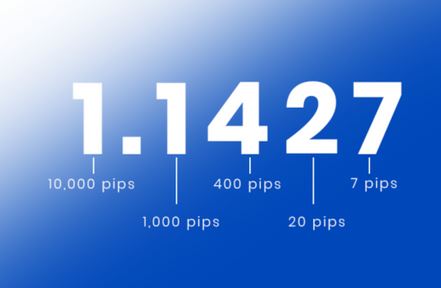A “pip” in trading means a minimal price change. This is a short form of “percentage in points.”
In foreign exchange (FX) trading, a point is the slightest change in the price of a coin that can happen. Thus, trading foreign exchange is a standard way to measure money.
Forex traders use the term “pips” to measure small changes in the price of a currency pair. On the forex market, pips are a common way to measure the size of price changes. But their exact value will change based on the instrument being traded.

How to use pips in forex trading?
For example, a trader who buys GBP/USD at 1.5000 and sees the exchange rate go up to 1.5040 would have made 40 pips. When the deal is over, the trader may have made money.
On the other hand, if the trader buys GBP/USD at 1.5000 and the exchange rate goes down to 1.4960, he loses 40 pips. If the deal is closed, the trader may have lost money.
Also, an investor who buys GBP/JPY at 145.00 and sees the exchange rate go up to 145.75 will have made a profit of 75 pips. If the seller loses money and the GBP/JPY rate drops to 144.25, the price has moved against the merchant by 75 pips.
In currency trading, gains, and losses are measured in “increments of one pip” or “pips.” Pips can also be used to figure out risk and leverage.
A stop-loss order is one way for a dealer to control the amount of money he could lose. If the currency pair goes against you, placing a stop-loss order will help you lose less.
How to calculate pips?
The amount gained or lost with each tick is based on the value of a pip. To determine the value of a pip, we need to know the currency pair, the size of the trade, and the spot price.
To figure out how much a pip is worth for a money pair with four significant digits:
This is how you determine how much a pip is worth:
“(0.0001 x deal sum) / spot price”
Why does the value of pips go up and down?
Changes in the percent-of-account-value (pip) of many currency pairs will be tied to the trader’s original account balance.
If your second (quote) currency is USD, typical for most currency pairs, each pip will cost you $10 per standard lot, $1 per mini lot, and $0.10 per micro lot.
The value of a pip will only change if the US dollar is the first (base) currency in a currency pair or if the US dollar is not involved in the pair and its value changes by more than 10% in either way.

Bottom line
On the foreign exchange market, pips track how prices change and how much money you make or lose. It’s also essential to use pips to keep risks in check.
If a deal goes wrong, a stop-loss order can be set in terms of pips to limit the amount of money that could be lost. Forex traders can use pips to determine how big their positions should be. This makes it less likely that they will start with a great position and lose a lot of money.


